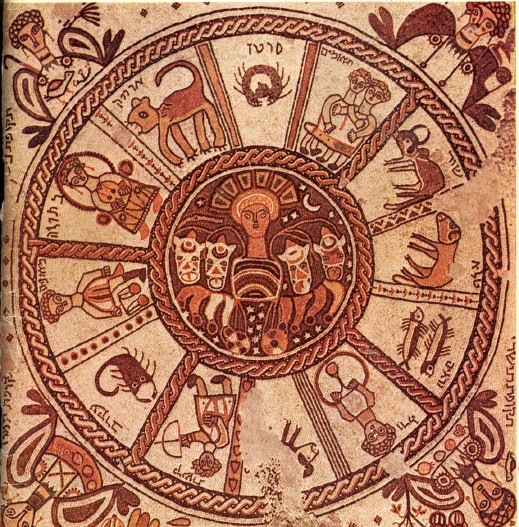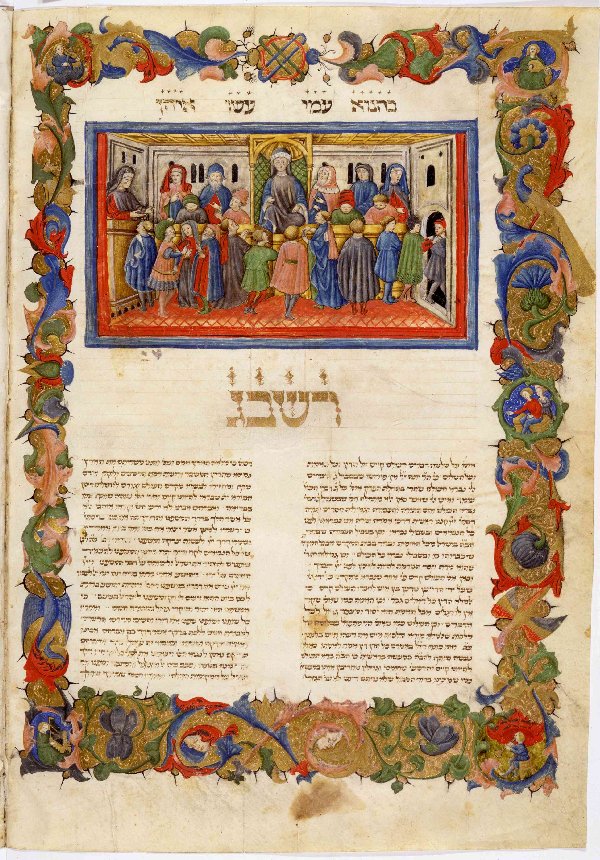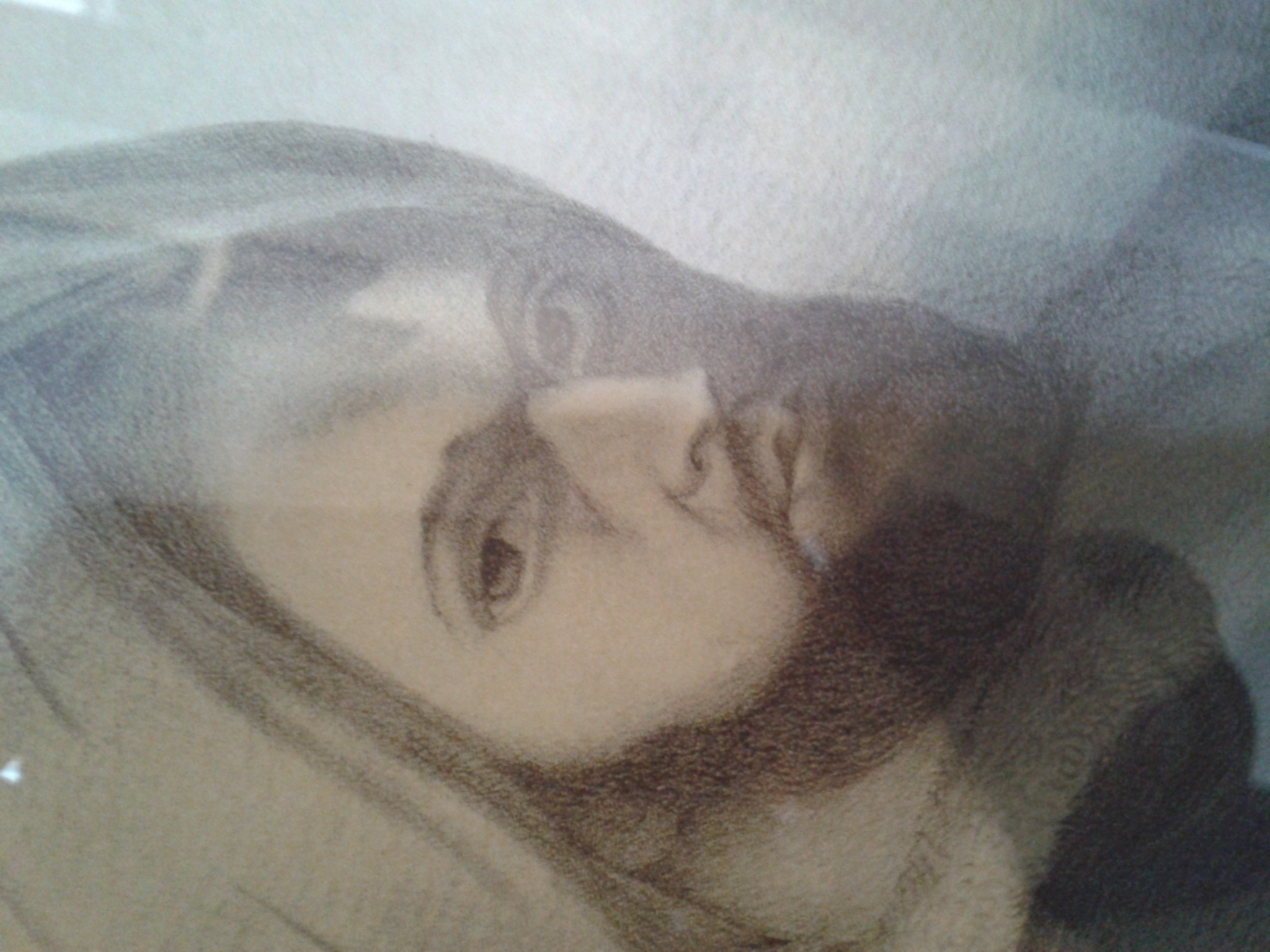|
Tekufah
Tekufot (Hebrew: תקופות, singular: tekufah, literally, "turn" or "cycle") are the four seasons of the year recognized by Talmud writers. According to Samuel Yarḥinai, each tekufah marks the beginning of a period of 91 days 7½ hours. The four tekufot are: # Tekufat Nisan, the vernal equinox, when the sun enters Aries; this is the beginning of spring, or "eit hazera" (seed-time), when day and night are equal. # Tekufat Tammuz, the summer solstice, when the sun enters Cancer; this is the summer season, or "et ha-katsir" (harvest-time), when the day is the longest in the year. # Tekufat Tishrei, the autumnal equinox, when the sun enters Libra, and autumn, or "et ha-batsir" (vintage-time), begins, and when the day again equals the night. # Tekufat Tevet, the winter solstice, when the sun enters Capricornus; this is the beginning of winter, or "et ha-ḥoref" (winter-time),Philologos, "Stripping Down for Winter," ''Forward'', Jan. 7, 2011, p. 11. Originally the translation ... [...More Info...] [...Related Items...] OR: [Wikipedia] [Google] [Baidu] |
Abudarham
David Abudarham ( fl. 1340) ( he, ר׳ דָּוִד אַבּוּדַרְהָם), referred to as Abu darham, Abudraham, or Avudraham, was a rishon who lived at Seville and was known for his commentary on the Synagogue liturgy. Biography He is said to have been a student of Jacob ben Asher (son of Asher ben Yechiel). This view originates in Chaim Yosef David Azulai's ''Shem Gedolim''. Abudarham gives full citations of authority up to and including Jacob ben Asher. He also mentions that he lived at Asher ben Jehiel's house, and was a "friend" of Jacob ben Asher. He is believed to be the ancestor of Solomon Abudarham (d. 1804), Chief Rabbi of Gibraltar. His work, ''Sefer Abudarham'' Abudarham belonged to the class of writers who, in an age of decline, felt the need of disseminating in popular form the knowledge stored up in various sources of rabbinical literature. His book, popularly known as ''Sefer Abudarham'', has no specific title beyond the name ''Ḥibbur Perush haBerak ... [...More Info...] [...Related Items...] OR: [Wikipedia] [Google] [Baidu] |
Hebrew
Hebrew (; ; ) is a Northwest Semitic language of the Afroasiatic language family. Historically, it is one of the spoken languages of the Israelites and their longest-surviving descendants, the Jews and Samaritans. It was largely preserved throughout history as the main liturgical language of Judaism (since the Second Temple period) and Samaritanism. Hebrew is the only Canaanite language still spoken today, and serves as the only truly successful example of a dead language that has been revived. It is also one of only two Northwest Semitic languages still in use, with the other being Aramaic. The earliest examples of written Paleo-Hebrew date back to the 10th century BCE. Nearly all of the Hebrew Bible is written in Biblical Hebrew, with much of its present form in the dialect that scholars believe flourished around the 6th century BCE, during the time of the Babylonian captivity. For this reason, Hebrew has been referred to by Jews as '' Lashon Hakodesh'' (, ) since an ... [...More Info...] [...Related Items...] OR: [Wikipedia] [Google] [Baidu] |
Moses
Moses hbo, מֹשֶׁה, Mōše; also known as Moshe or Moshe Rabbeinu (Mishnaic Hebrew: מֹשֶׁה רַבֵּינוּ, ); syr, ܡܘܫܐ, Mūše; ar, موسى, Mūsā; grc, Mωϋσῆς, Mōÿsēs () is considered the most important prophet in Judaism and one of the most important prophets in Christianity In Christianity, the figures widely recognised as prophets are those mentioned as such in the Old Testament and the New Testament. It is believed that prophets are chosen and called by God. This article lists such prophets. The first list bel ..., Prophets and messengers in Islam, Islam, the Druze faith, the Baháʼí Faith and Table of prophets of Abrahamic religions, other Abrahamic religions. According to both the Bible and the Quran, Moses was the leader of the Israelites and Law of Moses, lawgiver to whom the Mosaic authorship, authorship, or "acquisition from heaven", of the Torah (the first five books of the Bible) is attributed. According to the Book of E ... [...More Info...] [...Related Items...] OR: [Wikipedia] [Google] [Baidu] |
Jacob Mölln
Yaakov ben Moshe Levi Moelin ( he, יעקב בן משה מולין) (c. 1365 – September 14, 1427) was a Talmudist and ''posek'' (authority on Jewish law) best known for his codification of the customs (''minhagim'') of the German Jews. He is also known as Maharil ( he, מהריל) - the Hebrew acronym for "Our Teacher, the Rabbi, Yaakov Levi" - as well as ''Mahari Segal'' or ''Mahari Moelin''. Maharil's ''Minhagim'' was a source of law for Moses Isserles’ component of the ''Shulkhan Arukh''. Biography ''Maharil'' was the son and pupil of Moshe Levi Moelin, Rabbi of Mainz, and a pupil of R. Shalom b. Isaac ( he) of Wiener Neustadt. At a young age, Moelin was recognized as a budding scholar. In 1387, he succeeded his father as Rabbi of Mainz. He established a yeshiva in Mainz which attracted many students. One of his most noteworthy students was Jacob Weil. Moelin lived through the mass slaughter of Jews in Austria in 1420 and the Hussite Wars in 1421, which brought suf ... [...More Info...] [...Related Items...] OR: [Wikipedia] [Google] [Baidu] |
Shulḥan Aruk
The ''Shulchan Aruch'' ( he, שֻׁלְחָן עָרוּך , literally: "Set Table"), sometimes dubbed in English as the Code of Jewish Law, is the most widely consulted of the various legal codes in Judaism. It was authored in Safed (today in Israel) by Joseph Karo in 1563 and published in Venice two years later. Together with its commentaries, it is the most widely accepted compilation of Jewish law ever written. The ''halachic'' rulings in the ''Shulchan Aruch'' generally follow Sephardic law and customs, whereas Ashkenazi Jews generally follow the halachic rulings of Moses Isserles, whose glosses to the ''Shulchan Aruch'' note where the Sephardic and Ashkenazi customs differ. These glosses are widely referred to as the ''mappah'' (literally: the "tablecloth") to the ''Shulchan Aruch's'' "Set Table". Almost all published editions of the ''Shulchan Aruch'' include this gloss, and the term "Shulchan Aruch" has come to denote ''both'' Karo's work as well as Isserles', with Karo ... [...More Info...] [...Related Items...] OR: [Wikipedia] [Google] [Baidu] |
Isserles
). He is not to be confused with Meir Abulafia, known as "Ramah" ( he, רמ״ה, italic=no, links=no), nor with Menahem Azariah da Fano, known as "Rema MiPano" ( he, רמ״ע מפאנו, italic=no, links=no). Rabbi Moses Isserles ( he, משה בן ישראל איסרלישׂ, pl, Mojżesz ben Israel Isserles) (22 February 1530 / 25 Adar I 5290 – 11 May 1572 / 18 Iyar 5332), also known by the acronym Rema, was an eminent Polish Ashkenazic rabbi, talmudist, and ''posek'' (expert in Jewish law). Biography Isserles was born in Kraków, Poland. His father, Israel ben Josef (known as Isserl), was a prominent talmudist and independently wealthy, who had probably headed the community; his grandfather, Jehiel Luria, was the first rabbi of Brisk. (In an era which preceded the common use of surnames, Moses became known by his patronymic, Isserles.) He studied in Lublin under Rabbi Shalom Shachna, who would later become his father-in-law. Among his fellow pupils were his relative S ... [...More Info...] [...Related Items...] OR: [Wikipedia] [Google] [Baidu] |
Arba'ah Turim
''Arba'ah Turim'' ( he, אַרְבָּעָה טוּרִים), often called simply the ''Tur'', is an important Halakhic code composed by Yaakov ben Asher (Cologne, 1270 – Toledo, Spain c. 1340, also referred to as ''Ba'al Ha-Turim''). The four-part structure of the ''Tur'' and its division into chapters (''simanim'') were adopted by the later code Shulchan Aruch. This was the first book to be printed in Southeast Europe and the Near East. Meaning of the name The title of the work in Hebrew means "four rows", in allusion to the jewels on the High Priest's breastplate. Each of the four divisions of the work is a "Tur", so a particular passage may be cited as "Tur Orach Chayim, siman 22", meaning "Orach Chayim division, chapter 22". This was later misunderstood as meaning "Tur, Orach Chayim, chapter 22" (to distinguish it from the corresponding passage in the Shulchan Aruch), so that "Tur" came to be used as the title of the whole work. Arrangement and contents The ' ... [...More Info...] [...Related Items...] OR: [Wikipedia] [Google] [Baidu] |
Beit Yosef (book)
''Beit Yosef'' ( he, בית יוסף) (also transliterated ''Beth Yosef''), written by Rabbi Joseph Karo, is a long and detailed commentary on the Arba'ah Turim (''"Tur"'') by Jacob ben Asher. The ''Shulchan Aruch'', which Rabbi Karo wrote later in his life, is a condensation of its rulings. Description ''Beit Yosef'' is a comprehensive commentary on the ''Arba'ah Turim'', citing and analyzing the Talmudic, Geonic, and major subsequent halachic authorities. It analyzes the theories and conclusions of those authorities cited by the ''Tur'', and also examines the opinions of authorities not mentioned by him. Karo began the ''Beit Yosef'' in 1522 at Adrianople, finished it in 1542 at Safed in the Land of Israel; he published it in 1550–59. Thirty-two authorities, beginning with the Talmud and ending with the works of Rabbi Israel Isserlein (1390–1460 and known as the ''Terumath ha-Deshen''), are summarized and critically discussed in ''Beit Yosef''. No other rabbinical work ... [...More Info...] [...Related Items...] OR: [Wikipedia] [Google] [Baidu] |
Hezekiah Da Silva
Rabbi Hezekiah da Silva (also Hezekiah Silva) (1659–1698) () was a Jewish author born in Livorno, Grand Duchy of Tuscany. He was the son-in-law of the dayan Mordechai Rafael Malachi. Biography Hezekiah Da Silva was born in 1659 in Livorno, Grand Duchy of Tuscany. Around the year 1679, at age 20, Da Silva left his native city for Jerusalem in then-Ottoman Syria (Damascus Eyalet), where he attended the yeshivah of Rabbi Moses Galante for ten years. In 1689, Galante died and Da Silva succeeded him as Rosh Yeshiva. He was sent to Europe to collect funds for Jerusalem. In 1691, when Da Silva was in Amsterdam, he received an offer to become the city's Sephardi rabbi, which he refused.Rabbi Gavin Michal (2018)"The Ban, Repeal, and Censoring of the Pri Chadash"/ref> Instead, he began the printing of his work ''Peri Chadash'' (), a commentary on the ''Yoreh De'ah''. Wealthy Amsterdam Jews offer to finance the publication. ''Peri Chadash'' was published in 1691 and immediately hailed ... [...More Info...] [...Related Items...] OR: [Wikipedia] [Google] [Baidu] |
Babylon
''Bābili(m)'' * sux, 𒆍𒀭𒊏𒆠 * arc, 𐡁𐡁𐡋 ''Bāḇel'' * syc, ܒܒܠ ''Bāḇel'' * grc-gre, Βαβυλών ''Babylṓn'' * he, בָּבֶל ''Bāvel'' * peo, 𐎲𐎠𐎲𐎡𐎽𐎢 ''Bābiru'' * elx, 𒀸𒁀𒉿𒇷 ''Babili'' *Kassite: ''Karanduniash'', ''Karduniash'' , image = Street in Babylon.jpg , image_size=250px , alt = A partial view of the ruins of Babylon , caption = A partial view of the ruins of Babylon , map_type = Near East#West Asia#Iraq , relief = yes , map_alt = Babylon lies in the center of Iraq , coordinates = , location = Hillah, Babil Governorate, Iraq , region = Mesopotamia , type = Settlement , part_of = Babylonia , length = , width = , area = , height = , builder = , material = , built = , abandoned = , epochs = , cultures = Sumerian, Akkadian, Amorite, Kassite, Assyrian, Chaldean, Achaemenid, Hellenistic, Parthian, Sasanian, Muslim , dependency_of = , occupants = , event = , excavations = , archaeologists = Hormuzd Rassam, Robe ... [...More Info...] [...Related Items...] OR: [Wikipedia] [Google] [Baidu] |
Hai Gaon
Hai ben Sherira (Hebrew: האי/י בר שרירא) better known as Hai Gaon (Hebrew: האי/י גאון, חאיי גאון), was a medieval Jewish theologian, rabbi and scholar who served as Gaon of the Talmudic academy of Pumbedita during the early 11th century. He was born in 939 and died on March 28, 1038. He received his Talmudic education from his father, Sherira ben Hanina, and in early life acted as his assistant in teaching. In his forty-fourth year he became associated with his father as "''av bet din''," and with him delivered many joint decisions. According to '' Sefer HaKabbalah'' of Rabbi Abraham ben David (Ravad), he was the last of the ''Geonim''. Appointment as Gaon As a consequence of the calumnies of their antagonists Hai and his father were imprisoned together, and their property was confiscated, by the caliph al-Qadir in 997 C.E. The imprisonment was brief, but shortly thereafter (in 998) the aged and infirm Sherira appointed his son to the position of gaon. ... [...More Info...] [...Related Items...] OR: [Wikipedia] [Google] [Baidu] |





